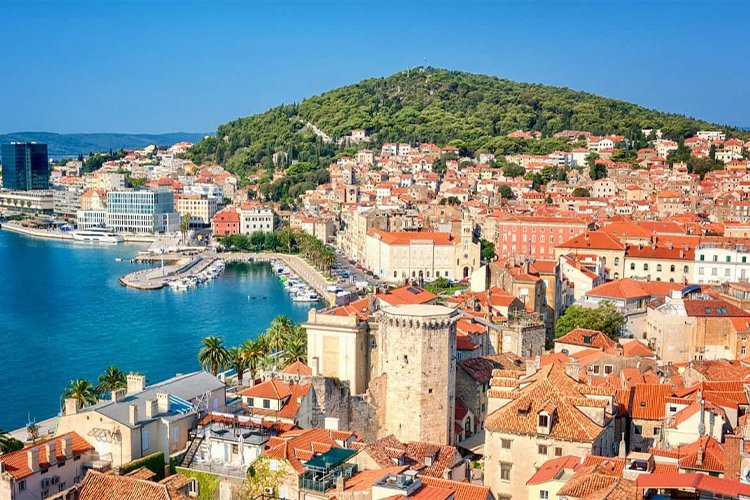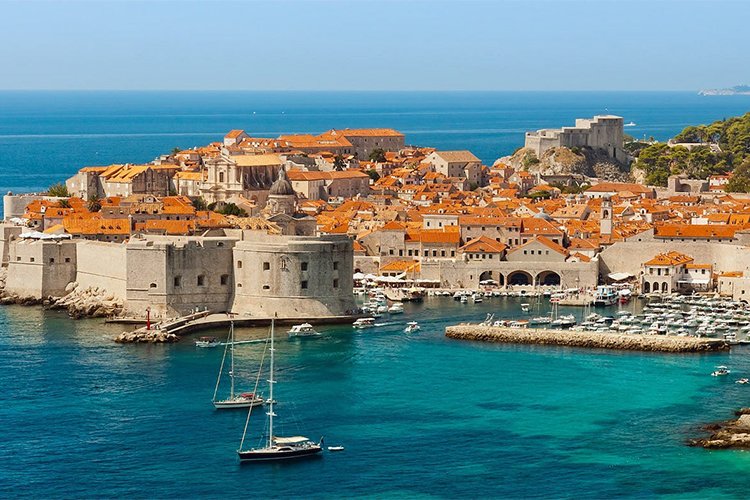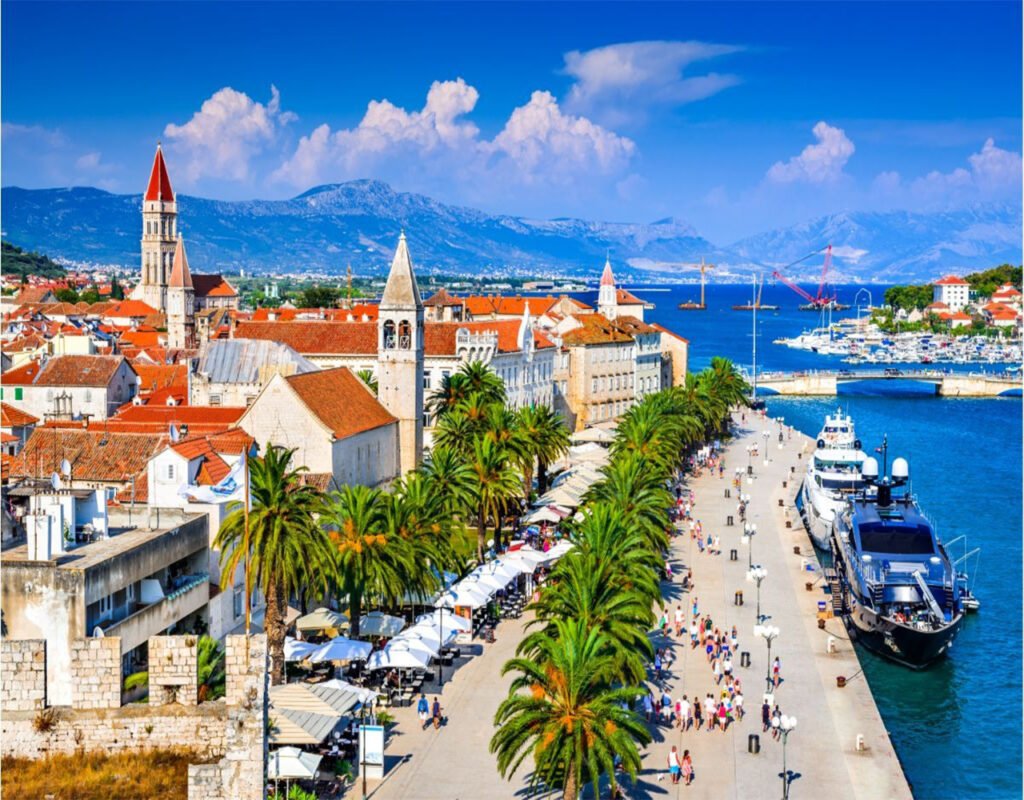Croatia has been a busy tourist hotspot for the past six or seven years. Shaped like a boomerang and bordered by Bosnia, Montenegro, Serbia and Slovenia, this small country of four million people is a real stunner. You can relax on the sunny Adriatic, hop between hundreds of rugged and remote islands, enjoy Italian cuisine or head inland and visit stunning waterfalls and lush national parks.
While there’s plenty to see and do here, most travelers limit their visit to Dubrovnik or Split. And sure, those are cool cities. But Croatia has a lot more to offer.
But if you only have a week and want to soak up the sun, I understand why you’d want to focus on this part of Croatia. (Pro tip: Like many other parts of Southern Europe, it’s best to avoid Croatia during the warm summer months. In addition to the high temperatures and high prices, you’ll be sharing the country with an army of tourists. If you travel in winter, the weather is cooler and prices are much lower, but many tourist cities like Dubrovnik are practically closed from late October to mid-April. It’s best to go from April to May and early September to early November. That’s when the crowds are smaller and prices aren’t as high.)
To help you plan your trip, I’ve created this ideal seven-day southern Croatia itinerary. It covers the highlights while also taking you off the beaten track. You’ll see towns, beaches, and villages, and have plenty of time to soak up the local pace of life.
Day 1 and 2: Dubrovnik
Dubrovnik is a coastal city of just 40,000 residents, but given its popularity, you’d think it was much bigger. It’s the country’s most popular destination thanks to its medieval, walled Old Town, or Stari Grad, which can be overrun with tourists, especially during peak summer season.
While most of Croatia is affordable, Dubrovnik is no longer cheap. Many cruises dock here and prices have skyrocketed in recent years. Still, there are a few things here that are worth paying outrageous prices for:

Walk the Old Town Walls
Walk the medieval wall is a must if you’re a first-time visitor. The EUR 35 entrance fee isn’t cheap, but the walk offers incredible views of the Old Town and the sparkling Adriatic Sea. It’s a 60-90 minute walk of awe and totally worth the price.
Climb Mount Srd
Take the cable car to the top of Mount Srd. It towers over the Old Town and while it costs EUR 27, once you’ve taken the ride and seen the view, you’ll realize it was worth the price. If you’re on a budget, you can also walk to the top. There’s a dirt path that takes you to the top, but it’s a challenging hike. Allow about an hour each way. Once at the top, you can take a seat at the restaurant and sip an overpriced drink while taking in the stunning views.
Visit the War Photo Ltd. Museum
There aren’t many great museums in Dubrovnik, but be sure to visit War Photo Ltd., a gallery founded by New Zealand-born Wade Goddard, a former war photographer. The permanent exhibition on the Balkan Wars of the 1990s will help you better understand what was going on here 30 years ago. It’s sobering but eye-opening. Admission is 10 EUR.
Explore Gruž
If you want to avoid the tourist crowds, especially when a cruise ship is in port, head to Gruž, a once-gloomy neighborhood by the marina that now has several great restaurants and cafes. It’s also home to the Dubrovnik Beer Company, the city’s first and only brewery. The cavernous taproom is a lovely place to sip a local beer after a day of exploring.
If you get hungry in Gruž, head to Kiosk, a casual outdoor eatery serving dishes from the Dalmatian coast with international influences. Or, for something truly unforgettable and very Dalmatian, reserve a spot at Marija’s House, where chef Marija Papak opens her home to visitors during the warmer months and prepares a nightly feast of Peka cuisine – lamb, pork and/or octopus slow-cooked under a bell-like lid on the grill, making the meat incredibly tender and delicious.
Day 3: Split
About 240 kilometers up the coast is Split, Croatia’s second largest city. This beautiful city has been relatively ignored by tourists until recently. But there are a few good reasons to spend at least a day and a night here.
Split’s main attraction is impossible to miss. When the Roman Emperor Diocletian decided to retire to the area he grew up in – the central Dalmatian coast – he had a huge, lavish palace built right on the beach. He died a few years after moving in, and what happened next is pretty interesting: Over the centuries, as the palace began to crumble and become a ruin, the city basically moved in and made it part of the urban fabric.

Today, you can stroll through the center of Split and suddenly realize that you are actually in the palace. What was once a hallway, for example, is now a narrow, limestone-paved alley. What might once have been a bedroom is now a seafood restaurant.
Much of the palace is freely accessible. However, if you want to take a closer look, there are plenty of guided tours available.
And while you’re in Split, don’t miss the Cathedral of Saint Duje, Klis Fortress (famous from Game of Thrones), and the Museum of Croatian Archaeological Monuments (home to around 20,000 relics and artifacts).
The other main reason Split should be on your itinerary is because it’s the main transportation hub for ferries to various islands in central Dalmatia. After spending an evening in the city, hop on a morning ferry to Hvar, one of Croatia’s coolest islands, a pleasant hour and forty-five minutes. If you want to get there faster, there’s also a catamaran.
Day 4: Hvar
Known for its lavender production, the island of Hvar is a fun place to spend a day. The eponymous town of Hvar is the main attraction for most people. Packed with centuries-old houses and narrow streets, it’s an interesting place to get lost for a while.
It’s also attracted a wild party scene. All boat tours stop here so their passengers can get drunk and hit the club at the world-famous Carpe Diem, so keep in mind that this island has a party scene – but the island has a lot more to offer!
For something a little more relaxed, head to Stari Grad, literally “Old Town,” on the opposite side of the island from Hvar Town. Recently added to the UNESCO World Heritage List, it offers a maze of narrow, stone-covered streets. Be sure to also take a hike through the island’s many olive groves and lavender fields.
If you don’t have your own vehicle, there’s a wine and olive oil tasting tour to this side of the island (you’ll also stop at the lavender fields).
Days 5 and 6: Sibenik and Krka National Park
About halfway up the coast between Split and Zadar lies the often-overlooked Šibenik (pronounced “Shee-ben-eek”), a medieval town of around 35,000 that’s worth spending a few days in. First off, St. James’s Cathedral is a marvel; it’s the largest church in the world built entirely of stone. The fortress-clad town also boasts a labyrinth of limestone alleyways. If you’re looking to splurge, Šibenik is home to Pelegrini, a Michelin-starred restaurant that serves creative takes on central Dalmatian cuisine.
Šibenik is also the gateway to exploring nearby Krka National Park and its stunning waterfalls. Also make sure to get there early to beat the tourist buses and visit the 14th-century Visovac Monastery in the middle of an island in the Krka River. Park entrance costs between EUR 7 in low season (January-February) and a whopping EUR 40 in high season (June-September).

